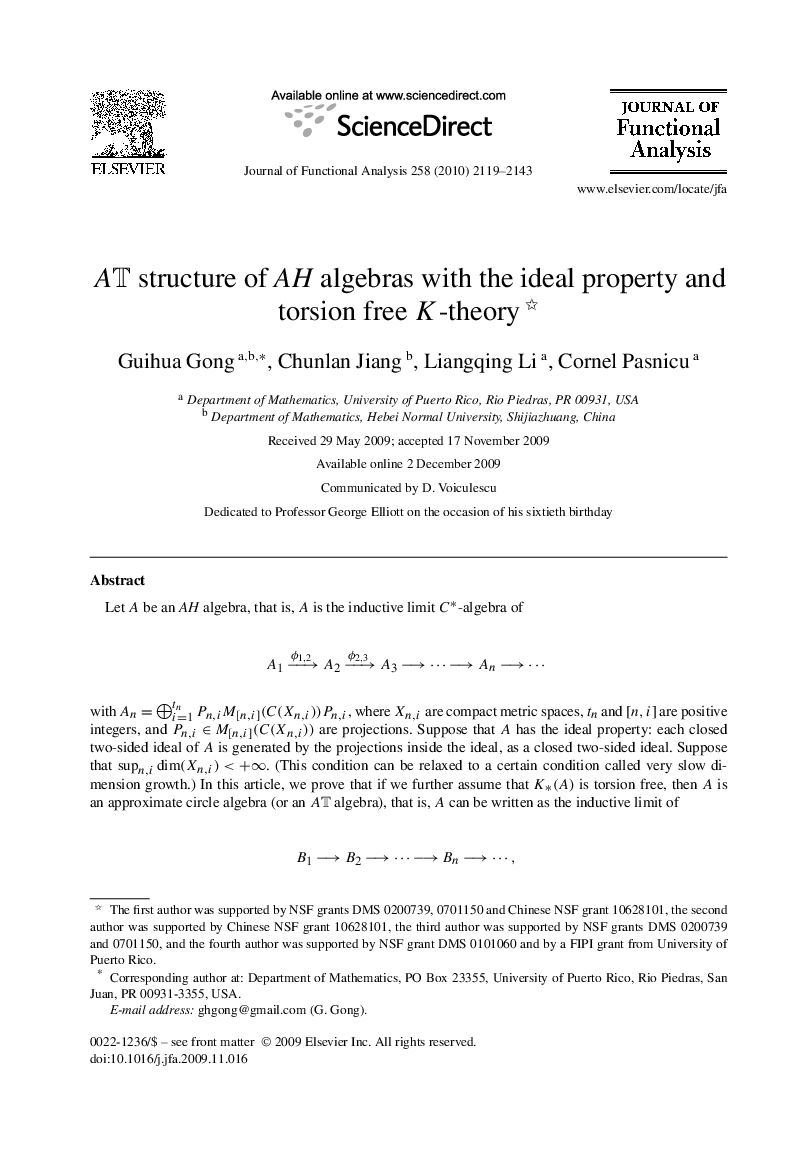| Article ID | Journal | Published Year | Pages | File Type |
|---|---|---|---|---|
| 4591400 | Journal of Functional Analysis | 2010 | 25 Pages |
Let A be an AH algebra, that is, A is the inductive limit C∗C∗-algebra ofA1→ϕ1,2A2→ϕ2,3A3→⋯→An→⋯ with An=⊕i=1tnPn,iM[n,i](C(Xn,i))Pn,i, where Xn,iXn,i are compact metric spaces, tntn and [n,i][n,i] are positive integers, and Pn,i∈M[n,i](C(Xn,i))Pn,i∈M[n,i](C(Xn,i)) are projections. Suppose that A has the ideal property: each closed two-sided ideal of A is generated by the projections inside the ideal, as a closed two-sided ideal. Suppose that supn,idim(Xn,i)<+∞supn,idim(Xn,i)<+∞. (This condition can be relaxed to a certain condition called very slow dimension growth.) In this article, we prove that if we further assume that K∗(A)K∗(A) is torsion free, then A is an approximate circle algebra (or an ATAT algebra), that is, A can be written as the inductive limit ofB1→B2→⋯→Bn→⋯,B1→B2→⋯→Bn→⋯, where Bn=⊕i=1snM{n,i}(C(S1)). One of the main technical results of this article, called the decomposition theorem, is proved for the general case, i.e., without the assumption that K∗(A)K∗(A) is torsion free. This decomposition theorem will play an essential role in the proof of a general reduction theorem, where the condition that K∗(A)K∗(A) is torsion free is dropped, in the subsequent paper Gong et al. (preprint) [31]—of course, in that case, in addition to space S1S1, we will also need the spaces TII,kTII,k, TIII,kTIII,k, and S2S2, as in Gong (2002) [29].
